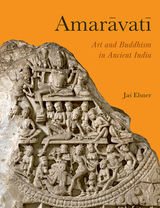
In this book, Jaś Elsner presents a fresh perspective on the rich visual culture of ancient South Asia, connecting the stupa’s artistic innovations with advancements in Buddhist philosophy and practice. He offers new insights into early Buddhist art in South India, as well as a new understanding of the relationship between early Buddhism and its material culture. The photographs collected here, particularly those featuring objects from the British Museum in London, reveal in detail how the stupa communicated Buddhist teachings and practices to its followers, making this book an invaluable resource for students and scholars alike.
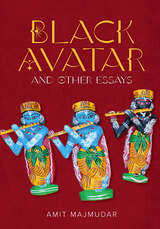
The eight pieces in this deeply engaging volume reflect author Amit Majmudar’s comprehensive studies of American, European, and Indian traditions, as well as his experiences in both suburban Ohio and the western Indian state of Gujarat. The volume begins with the title piece, a fifteen-part examination of “How Colorism Came to India.” Tracing the evolution of India’s bias in favor of light skin, Majmudar reflects on the effects of colonialism, drawing upon sources ranging from early Sanskrit texts to contemporary film and television.
Other essays illuminate subjects both timely and timeless. “The Ramayana and the Birth of Poetry” discusses how suffering is portrayed in art and literature (“The spectrum of suffering: slapstick on one end, scripture on the other, with fiction and poetry . . . in the vastness between them”), while in “Five Famous Asian War Photographs”—a 2018 Best American Essays selection—Majmudar analyzes why these iconic images of atrocity have such emotional resonance. In “Nature/Worship,” another multi-part piece, the author turns his attention to climate change, linking notions of environmentalism to his ancestral tradition of finding divinity within the natural world, connections that form the basis of religious belief.
Perhaps the greatest achievement of these wide-ranging essays is the prose itself—learned yet lively, erudite yet accessible—nimbly revealing the workings of a wonderfully original mind.

One of the minor miracles of art history is the extraordinary flowering of Indian painting that began in the mid-sixteenth century under the early Mughal emperors of Indian, notably Akbar the Great.
Only in recent decades has the consummate artistry of early Mughal painting come to be widely appreciated in the West. Scholars have noted the innovations--departures from both Islamic and native Indian tradition--of the new, highly distinctive school of painting, among them natural history studies, a concern for portraiture, and the documentation of contemporary court events.
Milo Beach traces, with an abundance of captivating illustrations, the evolution of the Mughal style. While acknowledging the influence of Akbar's interests and changing tastes (related in turn to historical and biographical circumstances), he shows that many of the new tendencies were evident during the short reign of Akbar's father, the Emperor Humayun, whose role as patron of the arts is thereby reassessed. Beach also stresses the traditionalism of the individual painters, who only gradually changed their concepts and compositions in response to foreign influences and to imperial taste. Mughal art, he affirms, can no longer be regarded as simply a reflection of its imperial patrons.
The book takes account of recently discovered material and reproduces for the first time important paintings from unpublished manuscripts and albums. It will appeal to the general reader as well as the scholar.
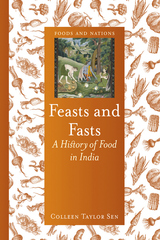
Exploring the ancient indigenous plants such as lentils, eggplants, and peppers that are central to the Indian diet, Sen depicts the country’s agricultural bounty and the fascination it has long held for foreign visitors. She illuminates how India’s place at the center of a vast network of land and sea trade routes led it to become a conduit for plants, dishes, and cooking techniques to and from the rest of the world. She shows the influence of the British and Portuguese during the colonial period, and she addresses India’s dietary prescriptions and proscriptions, the origins of vegetarianism, its culinary borrowings and innovations, and the links between diet, health, and medicine. She also offers a taste of Indian cooking itself—especially its use of spices, from chili pepper, cardamom, and cumin to turmeric, ginger, and coriander—and outlines how the country’s cuisine varies throughout its many regions.
Lavishly illustrated with one hundred images, Feasts and Fasts is a mouthwatering tour of Indian food full of fascinating anecdotes and delicious recipes that will have readers devouring its pages.
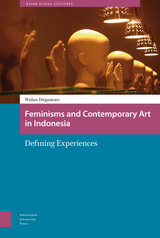
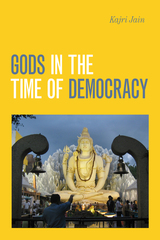
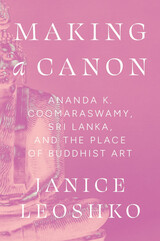
An early interpreter of Buddhist art to the West, Ananda Kentish Coomaraswamy laid the foundation of what would become the South Asian visual canon, particularly through his efforts to understand how Buddhist art emerged and developed. In Making a Canon, Janice Leoshko examines how Coomaraswamy’s experience as the director of a mineralogical survey in Sri Lanka shaped his understanding of South Asian art and religion. Along the way, she reveals how Coomaraswamy’s distinctive repetition of Sri Lankan visual images in his work influenced the direction of South Asia’s canon formation and left a lasting impression on our understanding of Buddhist art.

Persian Manuscripts & Paintings from the Berenson Collection presents an in-depth analysis of the little-known Persian manuscripts and paintings collected by the world-renowned art historian, art critic, and connoisseur Bernard Berenson (1865–1959). It focuses on three manuscripts and four detached folios (containing over fifty paintings) from the fourteenth to the seventeenth century produced in Iran and Central Asia (with a later addition in Mughal India).
Fourteen essays are written by an international team of specialists in art history, Persian literature, statistics, conservation, and conservation science. The first two essays introduce Berenson’s collecting of these art works as an individual and as a trend among other collectors. The rest of the essays explain individual works of art. The Timurid Rasaʾil and the Safavid manuscripts Shahnama of Firdawsi and Farhad va Shirin of Vahshi are examined in groups of essays ranging from art historical to literary, statistical, and codicological analysis. The detached folios studied as single essays originate from the famous Great Mongol Shahnama; the 1436 Timurid Zafarnama of Sharaf al-Din ʿAli Yazdi; a Turkman Shahnama; and the dispersed Imperial Mughal Album also known as the Minto, Wantage, and Kevorkian albums. The appendix refers to the materials and techniques of the paintings in the volume.
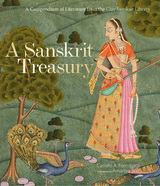
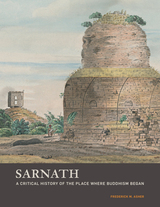
Sarnath has long been regarded as the place where the Buddha preached his first sermon and established the Buddhist monastic order. Excavations at Sarnath have yielded the foundations of temples and monastic dwellings, two Buddhist reliquary mounds (stupas), and some of the most important sculptures in the history of Indian art. This volume offers the first critical examination of the historic site.
Frederick M. Asher provides a longue durée (long-term) analysis of Sarnath—including the plunder, excavation, and display of antiquities and the Archaeological Survey of India’s presentation—and considers what lies beyond the fenced-in excavated area. His analytical history of Sarnath’s architectural and sculptural remains contains a significant study of the site’s sculptures, their uneven production, and their global distribution. Asher also examines modern Sarnath, which is a living establishment replete with new temples and monasteries that constitute a Buddhist presence on the outskirts of Varanasi, the most sacred Hindu city.
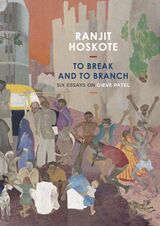
To Break and to Branch is a collection of six essays on the artist Gieve Patel (1940–2023), written by poet, cultural theorist, and curator Ranjit Hoskote over nearly two decades, gathered together for the first time and accompanied by over fifty illustrations of Patel's paintings. In an introductory essay written especially for this edition, Hoskote looks back over the long friendship he shared with Patel, contextualizing it within the vibrant artistic milieu that was once special to Bombay, their home city: a milieu premised on a mutual curiosity that brought the arts together, hospitable to poetry, painting, theater, cinema, music, and architecture.
Embodying this spirit, Hoskote engages with Patel’s evolving oeuvre as a painter and his experiments with sculpture, while connecting them to his investments in poetry, theater, and his growing philosophical awareness of the more-than-human. Hoskote’s writings trace both the constant preoccupations and the changing interests that gave Patel’s art its distinctive character and reflect on the aesthetic, philosophical, and political dimensions of Patel’s gradual movement from a human-centric understanding of the world to a more holistic view as generated and sustained by interrelationships across orders of being.
READERS
Browse our collection.
PUBLISHERS
See BiblioVault's publisher services.
STUDENT SERVICES
Files for college accessibility offices.
UChicago Accessibility Resources
home | accessibility | search | about | contact us
BiblioVault ® 2001 - 2024
The University of Chicago Press









